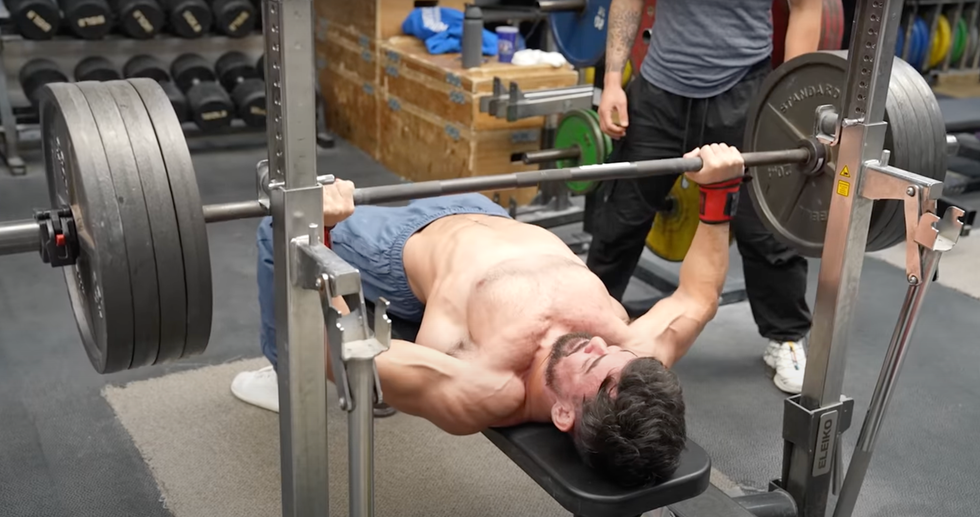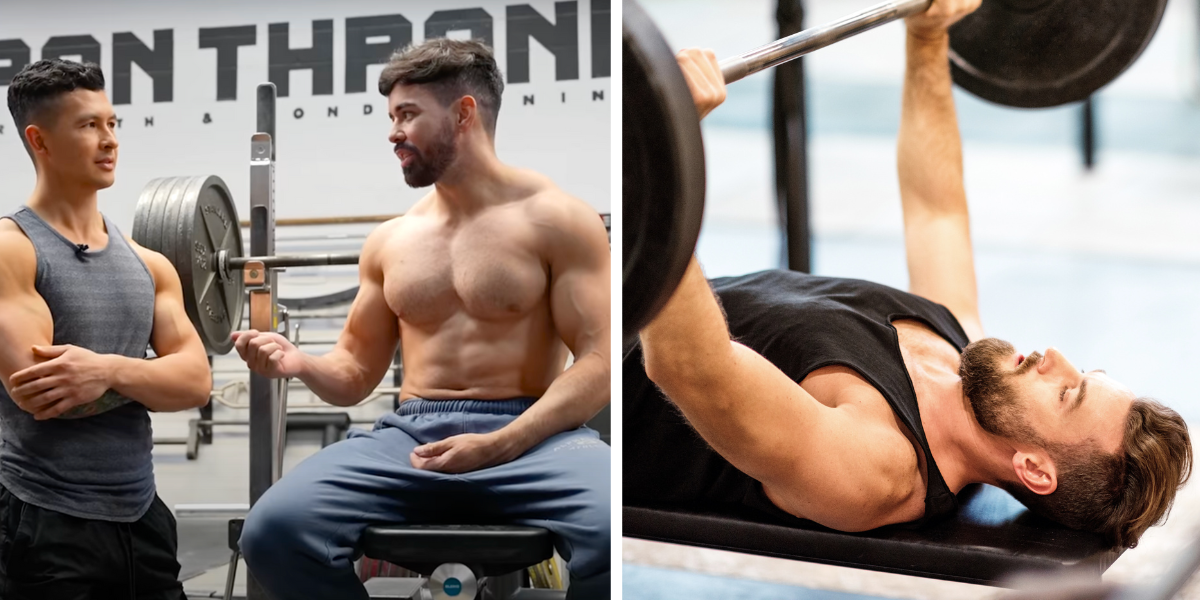Joining the ‘225lb club’ for the bench press (that’s 102kg) is an aspiration held by many lifters. It’s an exclusive group, though: according to Jeremy Ethier in his new YouTube video, only 2% of new lifters manage to join.
Ethier explains that it took him three years to reach the goal of 225lbs. For pro bodybuilder and lifter Ryan Maclellan, it took just one. Maclellan now benches over 400lbs, easily, and joined Ethier to explain the exact techniques he uses to increase his bench numbers, fast. Ethier breaks down the methods, along with the latest research.
Form Changes for an Improved Bench PressWidened Grip
Maclellan explains how he made a small change to his grip: ‘After I made that switch, it was a year’s worth of progress in three months. This is key if you’re serious about how to increase your bench press.’
Ethier cites research that shows widening your grip by just an inch or two can boost your bench press instantly by 5-10%. This works by decreasing the range of motion of your lift, a method used by powerlifters to increase their numbers.
‘The rule of thumb is the wider you go, the more pec engagement you’ll experience, and the more narrow you go, the more tricep engagement you’ll experience. You kind of want to play to your strengths. If you have very strong triceps, going narrow might help. But it comes down to experimentation and using how it feels to guide you,’ says Maclellan.
Arched Back
While it can be a controversial choice in lifting communities, Maclellan chooses to use a big arch for his lifts. This is supported by research, a study published in The Journal of Strength & Conditioning Research concluded that both flat back and arched back bench press techniques have their advantages, depending on training goals. The arched back technique allows for a greater one-rep max, likely due to the reduced range of movement, making it suitable for situations where lifting heavier loads is the primary goal like powerlifting.
He also uses ‘leg drive’ by planting his feet and creating tension by pushing the floor away from him. He describes this as imagining you’re on an office chair and trying to roll yourself backwards. He then pushes into his upper back with an arched back and engaged lats, with his hips lifted before unracking the bar and then lowering the hips. He then starts the rep.

@jeremyethier//YouTube
Workout Structure
Before hitting 400lbs, Maclellan works his way up incrementally over 30 minutes. He treats every set as a practice set in order to get the most out of his lifts and nail the technique.
He then structures his workouts into three parts:
- Strength: A few concentrated sets of heavy bench press performed with low reps and maximum effort.
- Sticking points: He then uses those sets to pinpoint weaknesses and make targeted adjustments. This is an essential step for consistently improving your bench press over time. He focuses on accessory lifts here to rectify these sticking points. For sticking at the bottom, he recommends dips and explosive bench. For the middle: overhead press and pause bench. For the top: close grip bench and Spoto press.
- Hypertrophy: Studies suggest muscle mass plays a major role in overall strength, and this link becomes even more significant as lifters become more experienced and refine their bench press technique. To make the most of this, Maclellan incorporates bodybuilding-style isolation moves to strengthen the muscles that support his bench. Exercises like incline dumbbell presses and cable flyes help target areas the bench might not fully activate. This is an important technique for continued progress without hitting a plateau.
Motivation
Maclellan gamifies his progress. Even if he doesn’t increase his bench press one week, he makes sure he increases his other lifts. He does this by tracking his workouts and ensuring he is pushing himself week to week. The progress he makes becomes a positive loop, keeping him motivated for his next session.
Mobility
By including a mix of yoga and light weights, Maclellan includes a hybrid of yoga and training he calls ‘broga’ that improves his joint health. This enables him to train with greater intensity and endurance, maintaining steady progress on his bench press.
Once-per-week Gains
Maclellan bench presses just once a week, which might sound counterintuitive, but this method is back by science. For beginners, research consistently shows that increasing bench frequency from once to two or three times a week can nearly double strength gains. But as you advance, this changes. While high frequency training benefits novices, the same approach doesn’t always apply to experienced lifters. That’s why Maclellan thrives on lower frequency training, though others may continue to progress faster with more frequent sessions.
Related Stories
